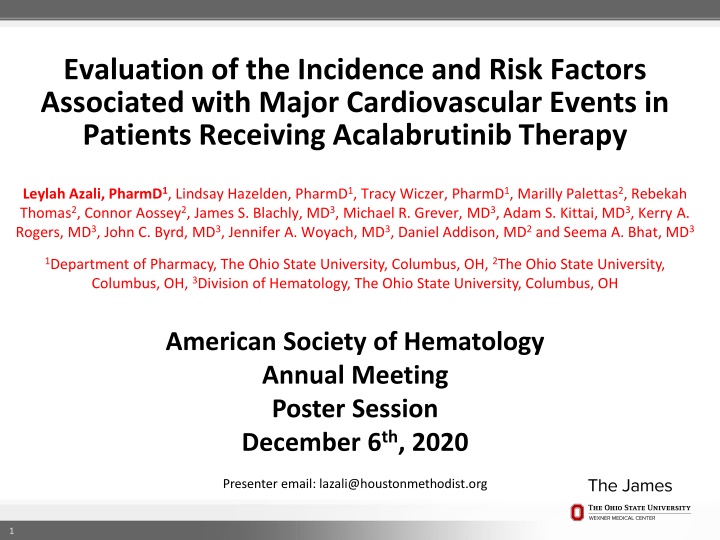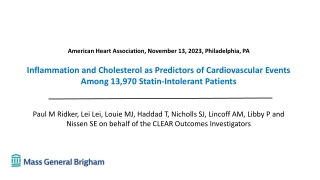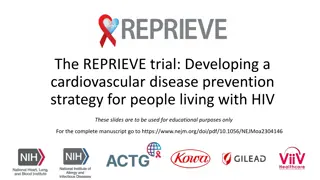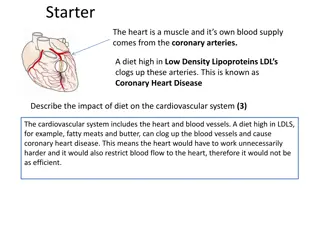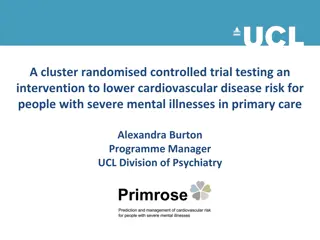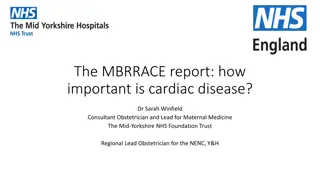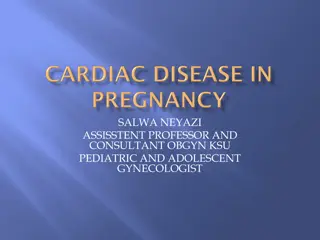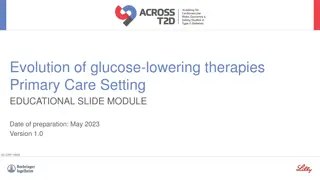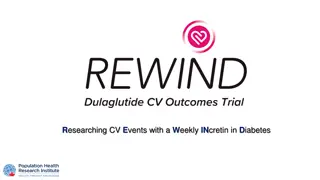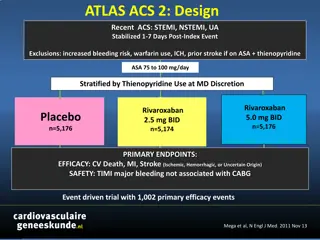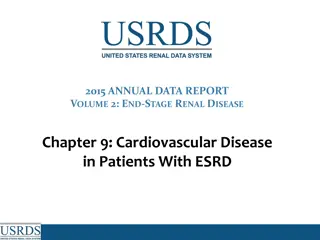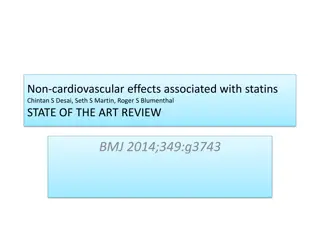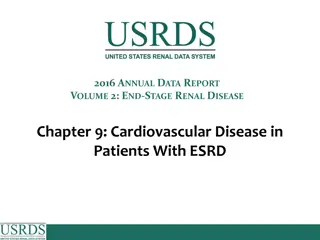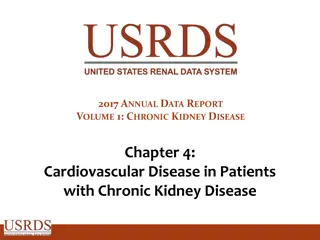Incidence and Risk Factors for Major Cardiovascular Events in Acalabrutinib Therapy Patients
Evaluation of major cardiovascular events in patients receiving acalabrutinib therapy, exploring risk factors and impact on cancer outcomes and survival. Study conducted at The Ohio State University.
Download Presentation

Please find below an Image/Link to download the presentation.
The content on the website is provided AS IS for your information and personal use only. It may not be sold, licensed, or shared on other websites without obtaining consent from the author.If you encounter any issues during the download, it is possible that the publisher has removed the file from their server.
You are allowed to download the files provided on this website for personal or commercial use, subject to the condition that they are used lawfully. All files are the property of their respective owners.
The content on the website is provided AS IS for your information and personal use only. It may not be sold, licensed, or shared on other websites without obtaining consent from the author.
E N D
Presentation Transcript
Evaluation of the Incidence and Risk Factors Associated with Major Cardiovascular Events in Patients Receiving Acalabrutinib Therapy Leylah Azali, PharmD1, Lindsay Hazelden, PharmD1, Tracy Wiczer, PharmD1, Marilly Palettas2, Rebekah Thomas2, Connor Aossey2, James S. Blachly, MD3, Michael R. Grever, MD3, Adam S. Kittai, MD3, Kerry A. Rogers, MD3, John C. Byrd, MD3, Jennifer A. Woyach, MD3, Daniel Addison, MD2and Seema A. Bhat, MD3 1Department of Pharmacy, The Ohio State University, Columbus, OH, 2The Ohio State University, Columbus, OH, 3Division of Hematology, The Ohio State University, Columbus, OH American Society of Hematology Annual Meeting Poster Session December 6th, 2020 Presenter email: lazali@houstonmethodist.org 1
Disclosure The speaker has no actual or potential conflict of interest in relation to this presentation 2
BTK: Brutons tyrosine kinase CLL: Chronic lymphocytic leukemia MCL: Mantle cell lymphoma Background Acalabrutinib is a highly-selective second-generation BTK inhibitor approved for CLL and MCL Ibrutinib has been associated with cardiovascular (CV) complications, possibly related to off-target effects Prior studies have demonstrated the incidence of major adverse cardiovascular events (MACE) with ibrutinib to be 16.5-38% Early experience with acalabrutinib suggests improved tolerability, but the long-term CV risks are unknown Ahn I. Blood 2019; 134 (22): 1881-1882 Binsah G, et al. Blood. 2014; 124 (21) Calquence [package insert]. Wilmington, DE: AstraZeneca Pharmaceuticals LP; 2017 Dickerson T, et al. Blood. 2019;134(22):1919-1928 3
Methods Primary outcome Incidence of MACE among patients treated with acalabrutinib Secondary outcomes Incidence of individual CV events Risk factors for MACE Impact of MACE on cancer disease outcomes and survival after acalabrutinib initiation Definition of MACE Cardiac arrhythmias (including atrial and ventricular arrhythmias), myocardial infarction, stroke, heart failure, and CV death 4
Methods Study design: Retrospective single center cohort review Location: The James Cancer Hospital at The Ohio State University Sample size: 290 patients Inclusion criteria Age 18 years old Hematologic malignancy only Patients treated with acalabrutinib (commercial or trial) between January 2010 to August 2019 Exclusion criteria Protected patient population (prisoners, pregnant females) Patients with inadequate records in the electronic medical record system 5
Results Baseline Characteristics n = 290; n (%) Age [median, IQR], years 64 [57, 71] Male 209 (72) Hematologic diagnosis CLL MCL 259 (89) 7 (2) 25 (9) Other* Acalabrutinib source Clinical trial Commercial 246 (85) 45 (15) Prior ibrutinib therapy 78 (27) Prior CV history 195 (67) Baseline hypertension 142 (49) Baseline atrial fibrillation 44 (15) *Diffuse large B cell lymphoma (DLBCL), Follicular lymphoma (FL), Hodgkin s lymphoma (HL) 6
Results Median follow-up (no MACE): 2.9 years Median follow-up (MACE): 2.1 years Primary outcome Incidence of MACE 7 272 (94) 300 Number of Patients (n, %) 150 18 (6) 0 MACE No MACE Incidence Breakdown of MACE Prior History of Atrial Fibrillation n = 18; n (%) Atrial fibrillation 12 (67) 5; 42% Yes No Diastolic heart failure 4 (22) 7; 58% Ventricular arrhythmia 1 (5.5) Ischemic stroke 1 (5.5) 7
Results Secondary outcome Overall survival Probability of Survival by MACE Event Years post acalabrutinib initiation MACE (%) No MACE (%) 71% 80% 3 years 5 years 50% 77% 8
Ibrutinib vs. Acalabrutinib Ibrutinib* Acalabrutinib Incidence of MACE 16% 6% Incidence of Atrial Fibrillation 13% 4% Incidence of Newly Diagnosed Heart Failure 3.7% 1.4% MACE per 1,000 person-years 66 21 *Dickerson T, et al. Blood. 2019;134(22):1919-1928 9
Conclusion This study demonstrated a relatively low incidence of MACE and appears to be lower than what is seen with ibrutinib The occurrence of these CV events appears to associate with worse survival outcomes Further research into the adverse CV complications after BTK inhibitor initiation is needed 10
